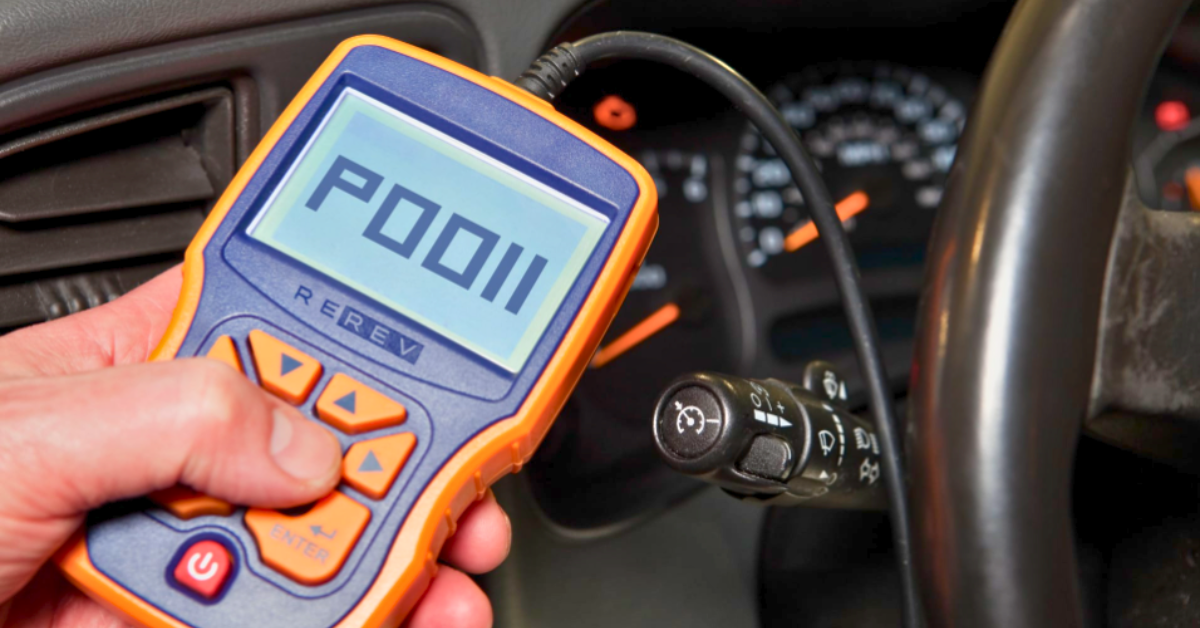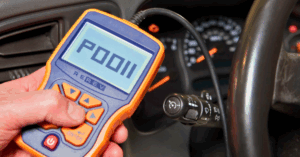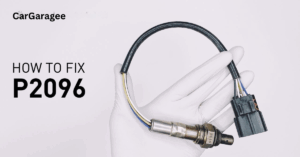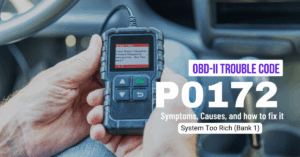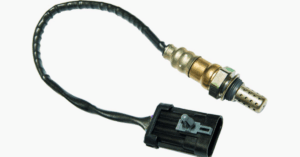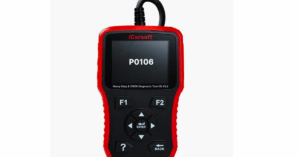When my vehicle’s computer first stored diagnostic trouble code P0011, I didn’t expect it to mean an over-advanced camshaft position an issue in Bank 1. The code related to intake camshaft(s), and it affected the engine performance system deeply.
The technician explained that the problem might lie in my engine’s V-shaped configuration, where cylinders are grouped into banks, and Bank 1 holds the first cylinder. He said the location of this cylinder depends on the engine design, usually at the front side near the drive belt. After their review of the repair orders, the Camshaft timing was fixed, and my engine ran smooth again.
When Code P0011 Starts Showing Up
I remember when Code P0011 popped up during a scan—it often points to problems in the VVT system that controls variable valve timing. This system helps optimize engine performance by adjusting when valves open and close. In my case, the issue was a faulty camshaft position sensor, but sometimes it’s due to low oil pressure or wiring issues.
The code is closely related to P0014, which means the exhaust valves are opening too early. If these codes occur together, it usually confirms a deeper timing imbalance. I’ve learned that fault codes like these aren’t random—they’re warnings that your engine’s performance is suffering.
Understanding What Code P0011 Really Means
When a diagnostic scan revealed Code P0011 in my vehicle, the technician explained it involves camshaft timing—the part responsible for opening and closing intake and exhaust valves in the engine. In engines with up to thirty-two valves, the timing must be precisely right for the car to run properly. The camshaft, driven by a timing belt or chain, must rotate at the correct speed to manage how air and fuel enter and how exhaust gases escape.

Depending on the setup—SOHC (single overhead cam) or DOHC (dual overhead cam)—the camshaft actuates different valve functions. This code usually relates to the intake camshaft and is critical to performance. Auto manufacturers use sensors to monitor the exact position and speed, and the ECM (engine control module) uses this data to detect if the camshaft is operating too early in relation to the crankshaft’s rotation. If it is, the ECM will turn on the check engine light.
Why Camshaft Position Timing Is So Important
In internal combustion engines, the camshaft position and timing guide the entire four-stroke cycle—intake, compression, power, and exhaust. The valve must open for the air-fuel mixture to fill the cylinder, then close as the piston compresses it, followed by a spark plug igniting the charge. Afterward, burned gases must be expelled efficiently.
If the camshaft timing is off, it affects how the camshafts control the valves and how the crankshaft moves the piston. Poor timing means gases may re-enter the intake manifold instead of being expelled, which reduces engine efficiency, increases emissions, and causes long-term damage.
What Causes Code P0011?
Here are the specific reasons Code P0011 may be triggered, each explained clearly:
- Faulty Camshaft Position Sensor– Sends incorrect timing data to the ECM, leading to improper camshaft adjustments.
- Malfunctioning VVT Actuator– If the variable valve timing actuator fails, it disrupts the timing adjustments needed for optimal performance.
- Incorrect Engine Oil Weight– Oil that doesn’t meet the manufacturer’s specifications can affect VVT system operation.
- Worn Timing Chain or Belt– A loose or stretched chain/belt causes incorrect camshaft and crankshaft synchronization.
- Faulty Timing Chain Tensioner– If the tensioner is weak or worn, the chain slack can throw off the timing.
- Low Oil Pressure or Level– The VVT system relies on proper oil flow; low pressure or insufficient oil affects cam phasing.
- Oil Sludge Buildup Inside Engine– Sludge restricts oil flow to camshaft-phasers, leading to delayed or stuck timing changes.
- Inaccurate or Dirty Oil Viscosity– Using oil with the wrong viscosity or dirty oil can reduce flow and VVT efficiency.
- Failing Variable Timing Solenoid– A stuck or slow solenoid prevents proper timing changes by not regulating oil to the cam.
- Restricted Oil Flow to Camshaft-Phasers– Blockages or dirty oil lines limit oil delivery, causing the phasers to misbehave.
- Faulty Oil Control Valve (OCV)– The OCV manages oil flow; if it fails, the cam timing becomes unstable.
- Stuck Actuator or Improper Adjustments– A stuck cam actuator may advance timing too far, triggering P0011.
- Powertrain or Engine Control Unit Faults– If the ECM or powertrain control module malfunctions, it may send wrong signals.
- Wiring Issues– Faulty wiring or loose connections can interrupt signals between components, especially the cam sensor and solenoid.
- ECM Software or Electrical Fault– Corrupt ECM software or internal electrical failure may misinterpret timing data.
- Camshaft Position Sensor Malfunctions– A sensor that sends inaccurate data will confuse the timing control logic.
Each of these issues can cause improper camshaft timing and lead to Code P0011 being stored in your vehicle’s ECM. Proper diagnosis is essential.
Symptoms Associated with Code P0011

When I first encountered Code P0011, I didn’t think it would affect my car this much—but the symptoms quickly made it clear something was seriously wrong with the camshaft timing and overall engine performance.
- Check Engine Light and Poor Engine Performance
The first and most noticeable symptom is the check engine lightturning on or flashing. Alongside this, your engine may shake, stall, or idle roughly, especially during stop-and-go traffic. In my case, the car felt sluggish, and acceleration was delayed because of poor camshaft timing. - Reduced Fuel Efficiency and Emission Failures
I also noticed my fuel economy dropped, and the car couldn’t pass an emissions test. This happens when the engine burns fuel inefficientlydue to the valves opening too early. The result is increased emissions, which may even trigger limp mode to protect the engine. - Unusual Engine Noises and Oil Contamination
Strange metal clicking or rattling noises came from the engine bay, especially when accelerating. On inspection, the shop found tiny bits of plastic and metal in the engine oil, pointing to internal wear. These noises usually mean that the timing components are misaligned or worn. - Hard Starting and Rough Idling
Another sign was how the engine sometimes struggled to start or idled unevenly, making the whole drive feel unstable. This is a common outcome when timing is advanced, throwing off the balance between air, fuel, and spark. - Power Loss and Hesitation on Acceleration
The car lacked its usual pickup, especially when merging or overtaking. That loss of power is directly linked to valves not opening and closing at the right time, which limits airflow and disrupts combustion.
These symptoms shouldn’t be ignored. They point to a serious timing issue that, if left untreated, could cause long-term engine damage and costly repairs.
How a Technician Diagnoses Code P0011
When my vehicle triggered code P0011, the technician used a high-grade diagnostic scan tool to check for related trouble codes and review the live data from the camshaft position sensors. They tested under different operating conditions to see if the timing was acting up. This step helped them pinpoint the exact issue affecting the VVT system.
After confirming irregularities, they performed a VVT actuator test through the scan tool to verify response and function. If needed, a small inspection camera was inserted into the engine to check the timing chain and tensioner without full disassembly. In my case, they found signs of severe wear, and that explained the inconsistent camshaft readings.
Additional Key Steps Technicians May Follow:
- Check sensor wiring and connectors for loose or damaged connections.
- Compare live data from both the camshaft and crankshaft sensors.
- Monitor oil pressure levels to rule out flow issues affecting the VVT system.
- Inspect ECM software updates or errors that could misread sensor input.
- Physically test the actuator solenoid to ensure it’s not sticking or delayed.
All these steps together ensure a proper and accurate diagnosis of code P0011 before starting any repairs.
How to Troubleshoot Code P0011
When I had to troubleshoot P0011, the first step was to scan the car using a diagnostic tool and then clear the codes. After that, I took the vehicle for a test drive to see if the fault code would come back. If the code reappears, it means the issue persists and needs further investigation.
If the code clears successfully, I continue observing the engine behavior while it’s fully warmed up. This helps in identifying any ongoing issues like rough idling, hesitation, or poor acceleration. If symptoms return, it confirms the trouble code needs deeper diagnose and fix steps to address the potential causes.
Change Engine Oil to Fix Code P0011
One of the primary causes of code P0011 in my case was low engine oil level and contamination. The fix was simple—I started by removing the used oil using a drain pan, unscrewed the oil plug, and let the old oil drain out completely. Then, I replaced the oil filter, applied oil to the new seal, and screwed it in snugly.

Next, I poured new oil into the engine through the filler cap, using the manufacturer-specified oil type. After filling, I used the dipstick to confirm the oil level was just below the top mark, not higher. I took the used oil and filter to a recycling center and checked for any leaks before driving—no more warning lights since.
Inspect the Camshaft Variable Timing Solenoid
When my car showed code P0011, the camshaft variable timing solenoid was one part I had to inspect. This component can get stuck or fail to adjust valve timing properly under normal driving conditions. I grabbed some hand tools like a ratchet, wrenches, and sockets, plus a valve cleaner and a digital multimeter to begin the check.
I located the solenoid—it was mounted on the exterior of the cylinder head cover, near Bank 1 cams. After removing it, I cleaned the valve, then used the multimeter to measure resistance, looking for a reading between 5–15 Ω. If it’s outside that range, or if the valve mechanism shows debris, damage, or binding, it can trigger P0011 and may need to be replaced.
How Much Does It Cost to Fix a P0011 Code?
Fixing code P0011 can vary depending on the repair needed, but I’ve broken it down from my own experience to give you a clearer picture. Some fixes are simple, like changing the engine oil, while others—like replacing the camshaft position sensor or timing solenoid—involve more labor and part costs.
Here’s a cost breakdown:
| Repair Type | Estimated Cost (Parts + Labor) | DIY Cost Range |
| Engine Oil Change | $200 | $60–$100 |
| Camshaft Position Sensor Replacement | $200 | $20–$150 |
| Variable Timing Solenoid Replacement | $300–$400 | $20–$150 |
These prices may vary depending on the vehicle model, shop rates, and location, but it’s always smart to diagnose the issue first to avoid unnecessary replacements.
How Serious Is Code P0011?

When code P0011 showed up in my car, the check engine light didn’t seem like a big deal—until I learned how serious it could get. It may start with noticeable performance issues, like poor fuel economy or rough engine operation, but if left ignored, it could signal a failing timing chain component, low oil pressure, or even a stuck VVT system.
In interference engines, if camshaft timing is off, pistons and valves can collide, causing catastrophic internal engine damage. I was told that burned gases re-entering the intake manifold can raise temperature, triggering pre-ignition or detonation. That’s why prompt diagnosis and repairs are crucial—not just to avoid breakdowns, but to keep the car reliable long-term and stay off the side of the road.
Can I Still Drive with Code P0011?
You can technically drive with code P0011, but it’s definitely not recommended. When I kept driving after the light came on, I noticed poor engine performance, reduced acceleration, and a rough idle, which made daily trips feel unsafe—especially while merging onto highways or navigating tight traffic.
In many cases, the car may trigger limp mode, a built-in safety feature that limits performance to prevent further damage. It’s best to visit a repair shop promptly instead of risking long drives or relying on the car for daily use, as the issue could get worse fast.
FAQs
How to fix error code P0011?
Fixing P0011 usually involves changing the engine oil, replacing the camshaft position sensor or VVT solenoid, and checking the timing chain and wiring.
Can dirty oil cause a P0011 code?
Yes, dirty or low oil can restrict oil flow, affecting VVT operation and triggering the P0011 code.
How do you reset camshaft timing?
Resetting camshaft timing involves aligning timing marks and possibly replacing worn components like the timing chain or tensioner, typically done by a technician.
What is the system performance code P0011?
P0011 means the intake camshaft timing is over-advanced or not performing as expected, often due to VVT or oil-related issues.

Mian Hashir is a passionate automotive enthusiast and the lead author at Car Garagee, a website dedicated to providing in-depth car reviews, maintenance tips, and the latest news in the automotive world. With years of experience in the industry, Hashir combines his technical knowledge with a love for cars to deliver insightful and engaging content. Whether you’re a car owner or a curious reader, Mian Hashir’s articles help readers make informed decisions, from choosing the right vehicle to understanding how to keep it in top condition.

